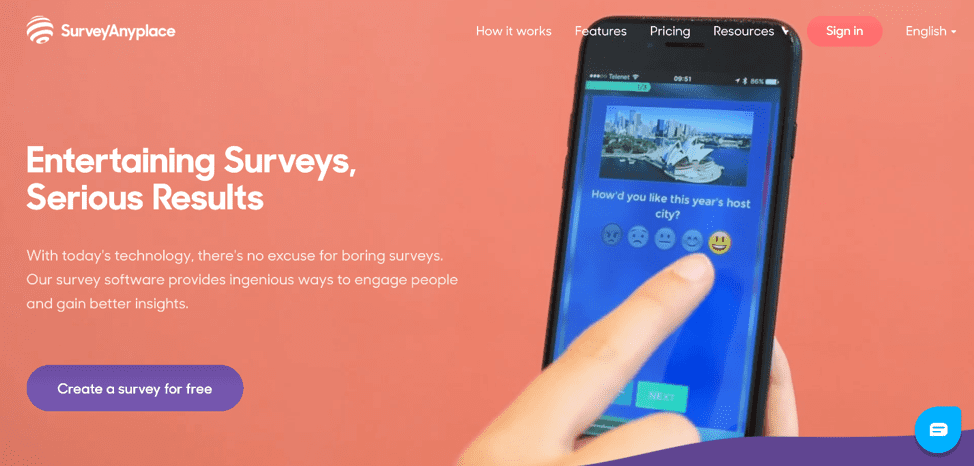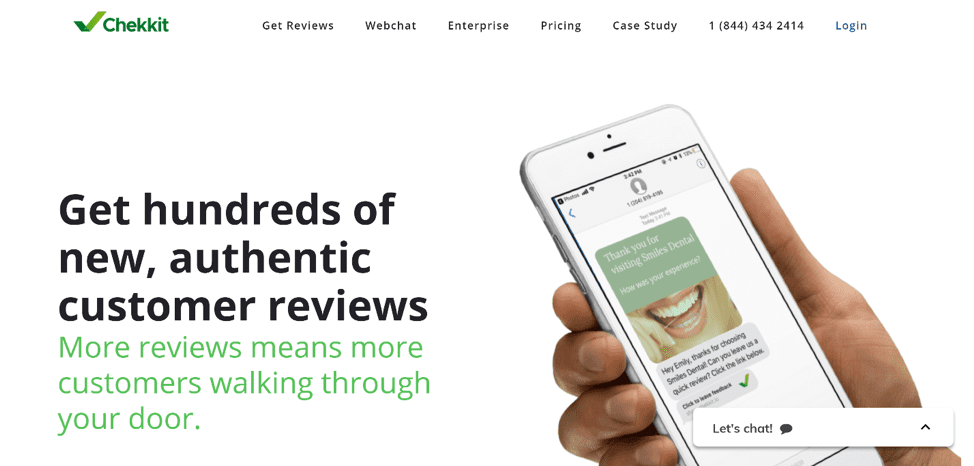It’s easier to repurpose past clients than to find new ones
Whether you’re an e-commerce shop, a small "brick and mortar" boutique, or a major retail chain, you should never overlook past customers and clients as a potential source of future revenue. In fact, it’s often easier to remarket to your past clients than it is to generate new business leads.
Your past customers are invaluable, in that they already understand your product or service, they have had personal interaction with your brand, and they have likely developed an opinion about your product and its ability to satisfy their needs.
As we’ll see, sometimes all that is needed is for your company to re-introduce itself, reminding the customer about your product. Other times, you’ll need to do some harder work, changing customers’ opinions and perceptions about your product and its ability to satisfy their needs. Both of these paths achieve the ultimate objective of getting your past customers engaged with your brand again and purchasing your products or services.
Download our Premium Resource – Lead capture and audience profiling
In this guide we’ll give you a structure to review and improve the types of insight you collect which will enable you to develop more relevant web and email personalization to encourage conversion to sale.
Access the
In this article, we’ll take a look at some methods you can use to re-engage past customers, helping your business to stand out from the competition and generate additional revenue.
Establish which customers you’re going to target
The first step in targeting your past customers is to determine which customers you wish to target with your remarketing campaign. This is accomplished by determining which factors are important characteristics in your past customers. For example, your remarketing campaign might target customers who have:
- Made a purchase within the last three months
- Used a customer rewards card
- Signed up through their email
- Subscribed to your email list
- Regular and predictable purchasing habits
- Converted on a past promotion
- Made a purchase over a certain monetary amount
By defining the characteristics of your target audience, you’ll have an easier time designing your remarketing campaign and determining if your strategies have ultimately been successful.
Understand why these customers stopped buying from you
Customers are often very unpredictable in their purchasing habits and this makes it difficult for your business to determine why past customers have stopped supporting your brand.
There are many reasons for a change in consumers’ purchasing habits, but some of the primary ones might be:
- They found a superior alternative
- A competitor offered them a better price
- They were driven away by overly-aggressive marketing tactics
- A competitor had red packaging (sometimes purchases are solely due to cosmetic features - trivial, yes, but accurate consumer behavior)
- They simply have no need for your product or service anymore
Consumer tastes can change overnight, leaving you wondering what happened. The best way to deal with this predicament is to survey past customers, asking for feedback about your product, service, pricing, support and the primary reason for their change in purchase behavior.

One survey software we would recommend for this is Survey Anyplace, as it provides a wide array of functionality for these types of customer surveys. Of course, you’ll need to provide some motivation, such as free products or a large discount, for customers to participate in your survey. It’s hard to find past customers who are willing to participate for free.
A customer survey will help you narrow down the primary causes for consumers’ change in purchase behavior. This is invaluable information, in that it helps you pinpoint any areas where your company can improve, helping to maximize customer satisfaction with your brand.
Create appropriate campaign goals
Once you have a decent understanding of why previous customers have changed their purchasing behavior, you’re equipped to develop your retargeting campaign. If during your customer survey, you discovered a widespread problem or misinformation about your product or service, you can customize your retargeting campaigns to resolve these issues. Alternatively, if you discover that many past customers have merely forgotten about your brand, you can create a retargeting campaign that focuses on re-introducing your brand to them, once again.
In short, your retargeting campaign should focus on repairing any disconnect between the target audience and your brand. Obviously, the end goal of almost every remarketing campaign is to get more sales and boost your revenue. In order to implement an effective remarketing campaign, you need to target goals that are well informed by consumer research.

Use an appropriate mode of communication
The way in which you choose to communicate with your target audience can literally make or break your remarketing campaign. Some channels include letter mail/brochures, visual media, radio, digital ad campaigns (PPC), or text and email outreach. Each channel possesses unique advantages and disadvantages and this could be taken into consideration when you’re planning your campaign. Each channel has differing levels of media richness, speed of transmission, cost and adaptability to different mediums.
The success of your remarketing campaign rests in the effectiveness of the communication channels you choose to use. You should consider both the content of your message and your target audience before settling on any one channel. You may also utilize several channels in order to enhance the communication of your message and the success of your remarketing campaign.
Develop an Engaging Pitch
Have you taken a close look at your inbox recently?
Like most email inboxes, it is probably filled with promotional offers that don’t even interest you and will likely never even be opened.
In a digital world that bombards consumers with advertisements and promotions that compete for their attention, you need a way for your message to stand out from the competition. Your marketing message must pique the audience’s interest and make them pay attention to your pitch.
You can make use of the following tips to make your communication more engaging:
- Get to the point – Consumers have an infamously-low attention span. If you don’t grab their attention within the first few seconds, you’ll lose them. It’s best to get right to the point, rather than create a long build-up. Get to the gist of your message as quickly as possible, and you’ll have a better chance of holding their attention. At worst, they got the "elevator pitch", and have a general idea about your product or service.
- Raise Curiosity – A message that raises curiosity is a great way for you to pique the interest of your customers without providing too much information, which usually will lead to higher audience retention. Be careful, though, because holding out for maximum anticipation can result in loss of audience attention.
- Offer a Trial – Everyone loves a good offer (especially free trials or products), and your customers are no different. Free products, services, or trial runs are a great way to grab the attention of your audience and re-engage your target audience with your brand.

- Create Urgency – The sense of urgency is a very powerful motivator that can make your audience act on your offer. You can create urgency by placing quantity or time limits on your offer, motivating your audience to act "before it’s too late."
Simplify the customer’s action process
Just as customers have an infamously-low attention span, they are also generally unmotivated to perform a particular action. You should always aim to make it easier for your customers to complete the desired action. If your process takes too long, the time commitment and effort will exceed the benefit, and they will drop out mid-process. You can minimize this problem by simplifying the necessary actions that your customer must take to complete a particular action.
For example, if you want your past customers to leave a business review, you shouldn’t expect them to go search for your business page and leave a review. They are unlikely to put in that much effort unless they are being compensated or have an emotional involvement (Side note: This is why many business reviews are negative; negative emotions are a stronger motivator than are positive emotions) in the business.
Rather, you should send them a link to your business review page, providing a single step in the process. This will leave less room for them to "drop off" a multi-step review process.
One such platform for acquiring business reviews is Chekkit. This platform sends your customers a text message with a "thank you" note and a link to leave a business review, which is then posted on a variety of review platforms, such as Google my Business, Yelp, Facebook, TripAdvisor, and many more.

When you minimize the amount of time it takes your customers to complete a particular action and remove any potential frustrations that your customer may encounter, you’ll find that more customers 'convert' just because it’s convenient.
Conclusion
Retargeting your past customers is much easier and simpler than constantly generating brand new business leads. With the high costs inherent in targeting a new audience and discovering new customers for your business, it’s well worth investing in a remarketing campaign to help recapture some of your previous customer bases. This boost in sales is typically much more effective and cost-friendly than pursuing and educating brand new target audiences. By following some of the tips provided in this article, you’ll be able to effectively reach out to your past customers and re-engage them with your brand.
Leighton Burley is the founder of
ARTIISEO, a digital marketing agency in Winnipeg, Canada. With over 10 years of experience in digital marketing, Leighton has worked with some of the top brands and agencies in North America. This experience has helped him develop a wide knowledge of the marketing industry. He also writes extensively about marketing, entrepreneurialism, and business at his agency’s blog,
ARTIISEO Academy.










